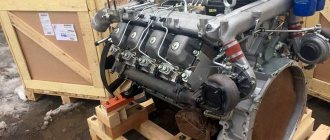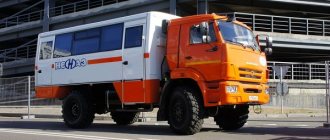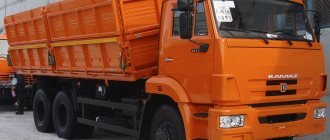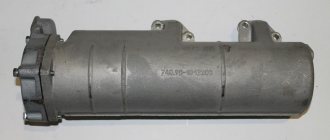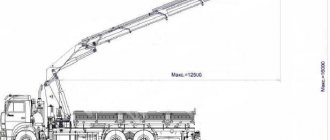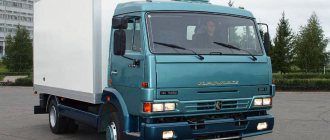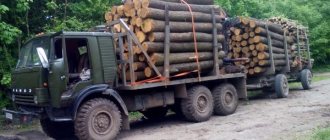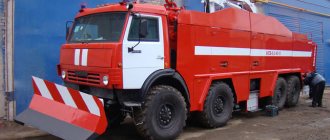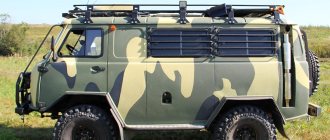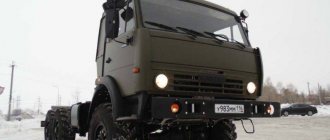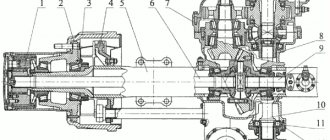KUNG is a type of closed body for army trucks. Today there are many opinions as to what it is, and there is still much debate about the decoding of this word.
Over time, it became so widespread among the people that any wooden or metal booths on cars or trailers began to be called KUNGs. Nowadays, for example, even a metal or fiberglass roof on the back of a pickup truck has become informally designated this way. One thing can be said: not everything is KUNG that is installed on military all-terrain vehicles or civilian vehicles. Let's try to figure it out.
What to pay attention to
When choosing an accessory in a store, you should clarify the following points:
- The material from which the element is made. It is best to opt for German fiberglass. Such a kung will have good strength, which would be inferior only to its metal counterparts, but is much lighter than them. A budget option is a two-layer hardtop, but it’s better not to save money and buy a four-layer model.
- Installation type. Ideally, you should purchase a modification that does not require damaging the car body for fixation, for example, drilling mounting holes. The clamps used to secure the kung must be made of durable metal, and the more of them, the better.
- Interior finishing material. Vinyl or leatherette looks good, but this material has a significant drawback - it breaks easily. It is better to buy an option with carpet (fabric for luggage racks). Even if it gets dirty, it can be easily washed, even with the use of auto chemicals.
- Roof seal. This is another factor that can make upgrading your car useless. The fact is that an ordinary porous seal is capable of absorbing moisture, so after several washes moisture will seep into the car, which will ruin the important cargo. It's better to stick with a rubber analogue.
- Does the seller provide spare parts for this modification of the hardtop? If not, it's better to find something else. The problem is that the kung can easily break (or a separate part of it, for example, glass while towing another car). Different spare parts cannot be replaced with a similar element from another manufacturer. This is a feature of manufacturers. And this is one of the biggest pitfalls when buying a kung car from a car dealer. In most cases, such companies do not sell spare parts.
- What is the warranty period and what cases does it cover? This period should not be less than a year, because during year-round operation the part is exposed to different weather conditions, which can reveal the weak points of the accessory. In this case, the paint should not crack, the shock absorbers should be strong.
- The seller sells products directly cooperating with the manufacturer, or is an intermediary. In the second case, the buyer will definitely overpay, and may be referred to another company for warranty service.
Here is a short video instruction for installing a kung on an Amarok RH04:
Kung on Amarok Rh04 Installation
How to choose a kung for a pickup truck?
When deciding on the type of kung, each pickup truck owner should start from the purpose of installing this part. This will be a visual tuning or modernization that has a practical purpose.
If a motorist plans to frequently transport large loads, then the accessory should be quickly and conveniently removed. Also, the model must be durable so that even a small hail does not damage the protection.
When a car overcomes decent off-road conditions, its body with a heavy load can become deformed. The kung should not break under such loads. To do this, you need to pay attention to heavier metal options. The same applies to models that have roof rails. Sooner or later, the driver will decide to use them to transport some kind of cargo.
How much does gas booth 3307 weigh?
Curb weight of GAZ
—
3307
equal to 3200 kg in the version without an awning and 3350 kg in versions equipped with an awning. In all cases, the gross weight of the vehicle does not exceed 7850 kg, and the load capacity is 4500 kg for the version of the truck with an open body and 4350 kg for versions with a platform equipped with an awning.
Interesting materials:
When did the NEP end? When does a building fall into category G for fire and explosion hazard? When is a woman considered a single mother in Ukraine? When I ring one beep and hang up? Who did Sultan Suleiman love most? Who was kept in concentration camps? Whom does the State Duma appoint and dismiss from office? Who is Woland punishing and for what? Which reserve officers are not called up? Which of the following persons should be considered the driver?
History of KUNG and Pickup
Since kungs are a military development, their history begins in wartime. On the territory of the Soviet Union, for the transfer of mobile troops with their strong points, they had to meet general standards of accessible transport. for example, during the mass redeployment of mobile modules it was necessary to use freight trains, and to transport a small train - trucks.
For this reason, the dimensions of the first kungs were adapted to the dimensions of the chassis of such vehicles. The loading track width of such modules was 1435 millimeters. In wartime, due to poor economics, the body of such modules was made mainly of wood, and the inside walls were lined with plywood. In the voids, the walls were insulated with felt, tow, wood wool, etc. All windows were inserted into rubberized openings.
Beginning in 1967, kungs began to appear widely available to civilians. Since that year, such modules have ceased to be produced exclusively for the needs of the army. If we talk about foreign modifications, their production is inextricably linked with pickup trucks, because it is with this type of body that many associate kung trucks.
Pickup trucks are covered in detail in another review . In short, this is a civilian passenger car with an open cargo part (flatbed). Most models are made by Japanese and American automakers. Many models are special SUVs with a flatbed body, but the assortment of many brands also includes cars based on their passenger counterparts.
The history of pickup truck production in America began in 1910 by Chevrolet. For almost 60 years, such vehicles were used largely by farmers due to their versatility. Since the 1980s, pickup truck manufacturers began to pay attention not only to improving the technical part of their pickup trucks, but also to giving them an original style, thanks to which the younger generation of motorists began to pay attention to this type of body. Pickup trucks were especially popular among outdoor enthusiasts.
In order for such cars to match their body type (the presence of a flatbed body implies that the car must be capable of transporting heavy loads), manufacturers equipped them with powerful engines and high-quality and durable transmissions. For greater functionality, manufacturers offer an accessory on most pickup truck models in the form of add-ons on the sides, which protect everything in the bed from harsh weather conditions and theft. Premium models fold out into canopies or even sleeping places for camping.
Basic models of KUNGs
From the first half of the 1950s to the end of the 1960s, the design bureau (TsPKB) of Glavmebelprom created a fairly large group of KUNG-type bodies for various types of army all-terrain vehicles and trailers for them that were produced at that time. Here are just some models:
- KUNG-1 for ZIS-150, ZIL-164;
- KUNG-1M for ZIS-151, ZIL-157;
- KUNG-1MM for ZIL-131;
- KUNG-2M for GAZ-63, GAZ-66-02;
- KUNG-P2M for trailers SMZ-710B, SMZ-810;
- KUNG-P6M for MAZ-5207V trailer;
- KUNG-P10 for MAZ-5224V trailer.
In the 1970s, other developments of KUNG-type bodies appeared:
- KUNG-1MD for ZIL-131;
- KUNG-66 for GAZ-66;
- KUNG-1.P2M for trailer SMZ-8326 (2-PN-2M).
Already in the 1980s and 90s they developed such models as:
- KUNG-3307 for GAZ-3307;
- KUNG-1.P4M for trailer GKB-782B (2-PN-4M);
- KUNG-1.P6M-01 for MAZ-8926 trailer;
- KUNG-1.P6M-02 for MAZ-8926 trailer.
This is only a partial list. Over the years, a much larger number of models have been developed and implemented. Since the second half of the 1950s, KUNGs have been produced on a mass scale at the Shumerlinsky furniture plant. Then, as if in a relay race, they were released at dozens of enterprises and woodworking plants in the USSR.
KUNG-66 on GAZ-66 chassis
What are the features of KUNGs?
Despite the fact that KUNG is a strictly standardized type of body, which has very specific parameters, gradually in the army and in civilian life other types of van bodies and even shift vehicles for drillers and geologists, in a word, various booths on wheels, began to be called this way. Therefore, there was often confusion about what KUNG was, which is still multiplying on the Internet.
What is the difference between the classic KUNG and other van bodies, for example, all-metal or frameless, which were also mass-produced for the needs of the army?
Simply put, the first KUNG-type body models (such as KUNG-1, KUNG-1M and others) were ordinary booths with rectangular walls and a rounded roof, with a single or double door with a small window. Depending on the customer's requirements, windows and special hatches were also made in different parts of the walls of the van.
The wooden frame was sheathed on the outside with sheet steel and on the inside with sheet plywood. The space between the skins was filled with various thermal insulation materials, depending on the model. At first they stuffed it with felt or tow, later with sawdust; they also put in foam rubber, glass wool, and polystyrene foam.
To ensure that the body was waterproof, all seams in the skin were treated with sealant, and rubber seals were installed in hatches, windows and doors. In addition, a common feature of all KUNGs is the presence of a filter and ventilation unit (FVU). This forced ventilation system was installed in the body to provide excess pressure and create an acceptable living environment in a confined space. This protected not only from atmospheric phenomena, but also from radioactive dust or other consequences of exposure to weapons of mass destruction.
Vans of this type were required to be equipped with electric lighting and heating systems. Early models had potbelly stoves, later electric stoves. The van was also heated by special exhaust pipes that ran under the floor of the body or in its front wall.
Interior view of a converted KUNG-66 on a GAZ-66 chassis
Technical and operational characteristics of KamAZ-4310
Dimensions and load capacity
- Car height – 3,590 millimeters;
- Width excluding mirrors – 2500 mm;
- Length - 7 650;
- Ground clearance (ground clearance): 365 mm;
- Outer overall turning radius: 11.2 meters;
- Curb weight: 8,410 kilograms;
- Load capacity: 6000 kg;
- Loading height: 1,530 millimeters;
- Maximum fording depth: 1,500 mm;
- Maximum climbing angle: 310;
- Maximum speed: 85 km/h.
Engine and fuel consumption of KamAZ-4310
In the first years of production, the all-terrain vehicle was equipped with a domestic four-stroke power unit KamAZ-740.10. This is a classic V-shaped eight with a displacement of 10.85 liters and a rated power of 210 horsepower at a rotation speed of 2,600 rpm.
Later, a KamAZ-740.10-20 diesel engine was installed on the truck. In terms of its main characteristics, it is in many ways similar to its predecessor, but has more power - 220 hp. The motor became famous for its reliability and ease of maintenance, as a result of which it received the unofficial name “Rex”. Both engines are not highly environmentally friendly; their parameters barely meet Euro 1 standards.
KamAZ-740.10.
Sports and specialized modifications of the KamAZ-4310 are driven by a turbocharged diesel engine with a capacity of 430 horsepower. This engine, with a displacement of 11.86 liters, has a turbocharging and intercooling system. Structurally, the engine is a V-shaped eight.
The declared fuel consumption rate corresponds to 30 liters per 100 kilometers. However, it must be taken into account that such fuel consumption is possible only when operating the car on a hard-surface road in the summer. In real conditions, when driving off-road and rough terrain, the fuel consumption of the KamAZ-4310 all-terrain vehicle can reach 50 liters per 100 km. As standard, the truck comes with two fuel tanks, 125 liters each.
Transmission and electrical equipment KamAZ-4310
In the basic version, the KamAZ-4310 is equipped with a five-speed manual gearbox, which has high survivability and allows the truck to accelerate to a speed of 60 km/h in 35 seconds. Synchronizers are installed at speeds 2–5, and the all-terrain vehicle's axles are equipped with locking differentials. Like any all-wheel drive truck, the KamAZ-4310 is equipped with a transfer case, which has a two-stage gearbox and a cylindrical locking center differential. The interaction between the engine and gearbox is ensured by a dry double-disc clutch with a hydraulic drive and pneumatic booster.
Power for the vehicle's electrical circuits and instruments is provided by two 12-volt batteries with a total capacity of 380 A/hour. The car is also equipped with a two-kilowatt 28-volt generator and voltage regulator.
Brake system and suspension KamAZ-4310
The KamAZ-4310 truck is equipped with four brake systems; in addition to the main brakes, there is an auxiliary, backup and parking brake. The vehicle also has an emergency brake release system and a two-wire and single-wire drive mechanism for trailer brake systems. Each truck wheel is equipped with brake drums with support discs, friction linings, tension springs and expansion cams. The parking brake operates on spring energy accumulators.
The design of the KamAZ-4310 uses a dependent leaf spring suspension, made on four leaf springs. The front suspension also uses hydraulic telescopic shock absorbers. The front suspension springs are composed of ten sheets, the rear suspension is reinforced with additional springs. As practice has shown, such a suspension is reliable and durable; in addition, it is easy to repair and maintain.
Detailed technical characteristics, description and refueling volumes of the KamAZ-4310 truck can be found in the table:
| Load capacity, kg | 6000 |
| Curb weight, kg | 8745 |
| Including: | |
| to the front axle | 4315 |
| on the trolley | 4430 |
| Total weight including additional equipment, kg | 15205 |
| Including: | |
| to the front axle | 5020 |
| on the trolley | 10185 |
| Permissible trailer weight, kg | |
| on paved roads | 10000 |
| by type of road | 7000 |
| Max, vehicle speed, km/h | 85 |
| The same, road trains | 80 |
| Vehicle acceleration time to 60 km/h, s | 35 |
| Max, angle of ascent overcome by the vehicle, degrees | 31 |
| The same, by road train | 20 |
| Vehicle run-out from 50 km/h, m | 600 |
| Car braking distance from 40 km/h, m | 17,2 |
| The same, road trains | 18,4 |
| Control fuel consumption, l/100 km, vehicle at 60 km/h | 30,0 |
| The same, road trains | 37,0 |
| Fording depth with a hard bottom at nominal tire pressure, m: | |
| without preparation | 0,8 |
| with preliminary preparation lasting no more than 15 minutes | 1,5 |
| Turning radius, m: | |
| on the outer wheel | 10,5 |
| overall | 11,3 |
Application in the army
KUNGs were installed on military vehicles and trailers, and they also mounted various equipment for military needs: diesel generators, radar stations, all kinds of electronic equipment and communications equipment, control devices for missile systems and much more. In addition, they were used to transport personnel; they housed laboratories, field kitchens, first aid stations, mobile repair shops, checkpoints, etc.
KUNG-1M on ZIL-157 chassis. 1961 (archive of 21st Scientific Research Center)
